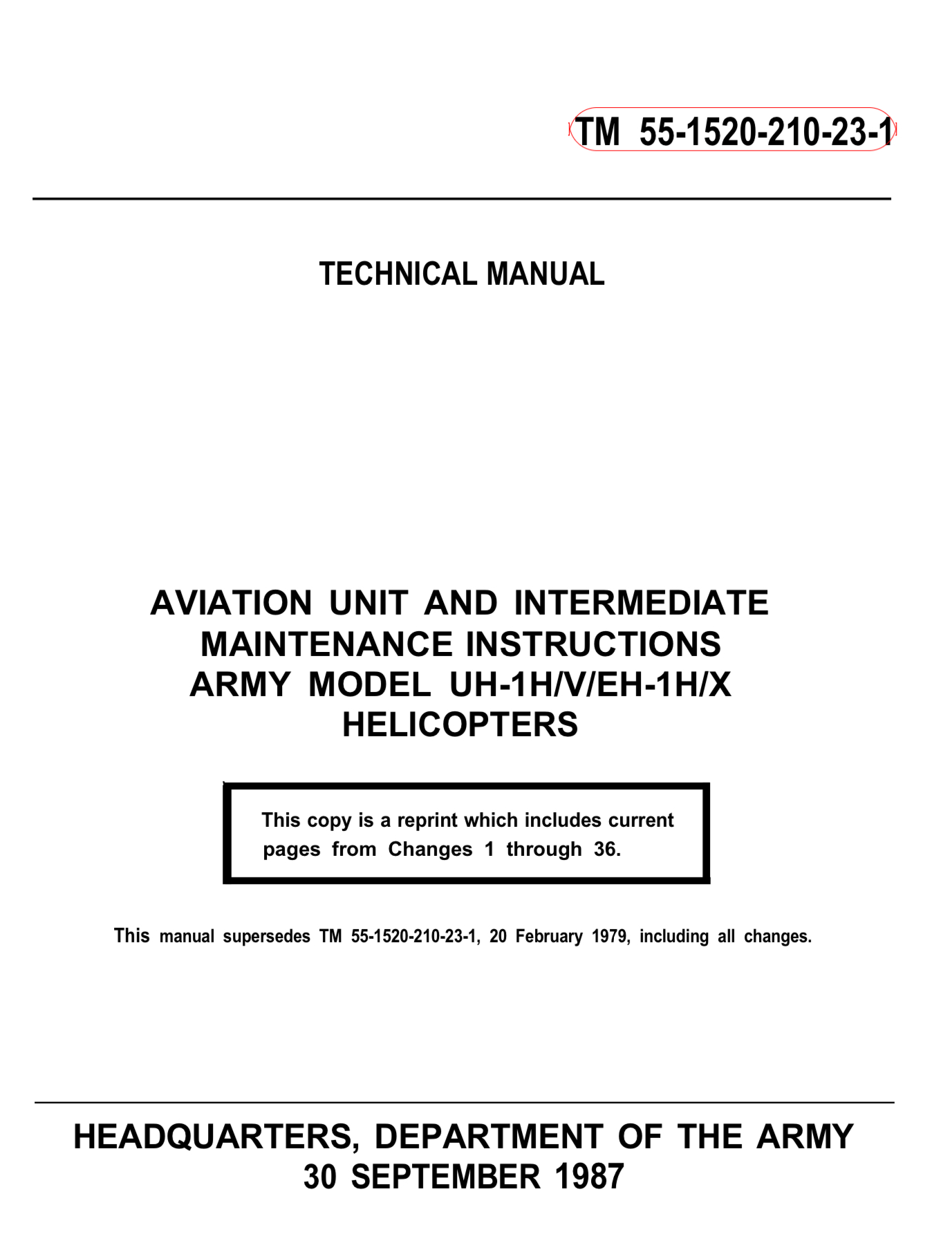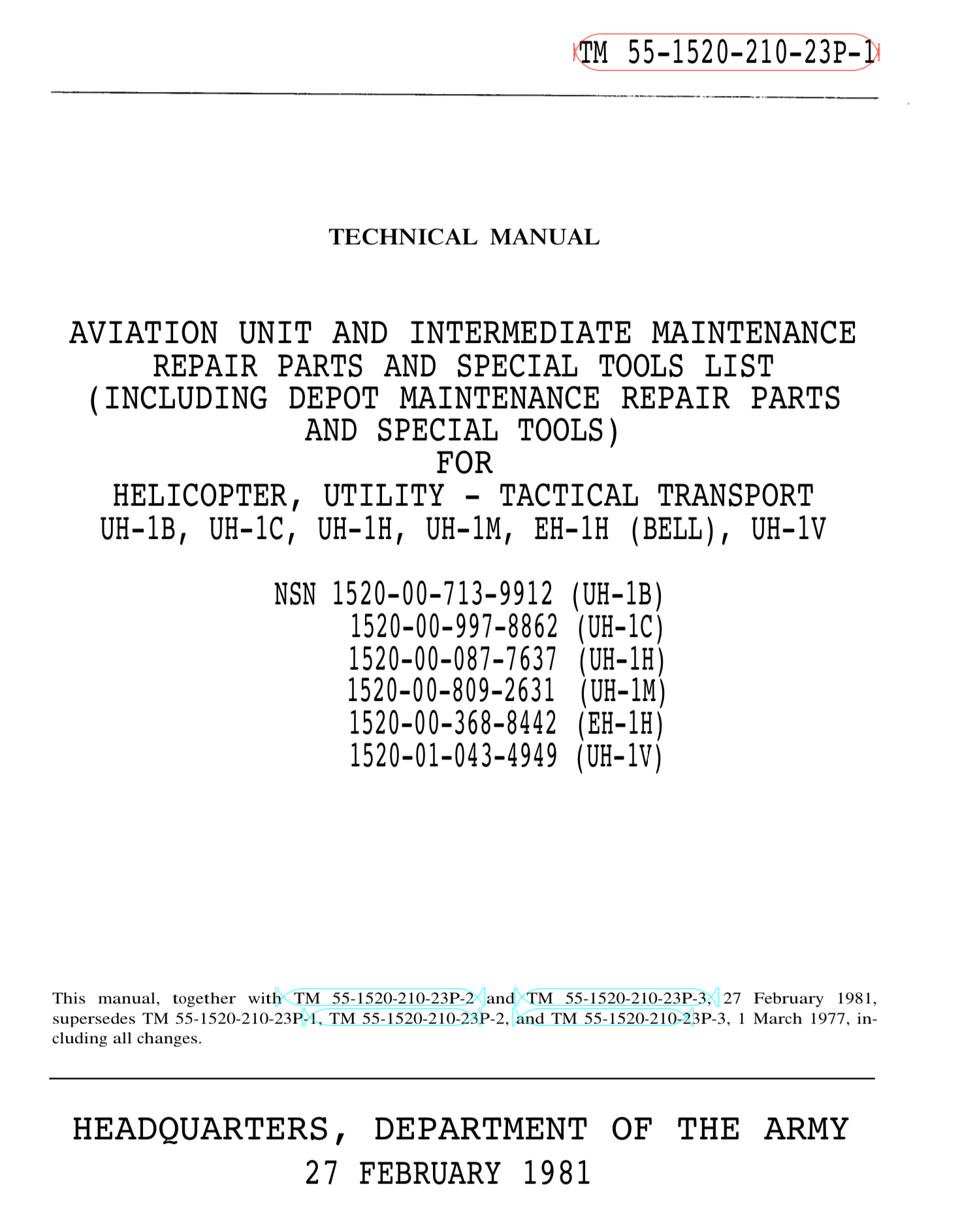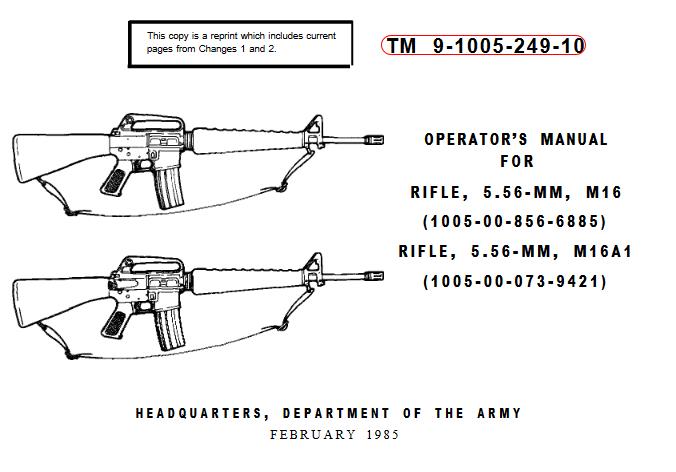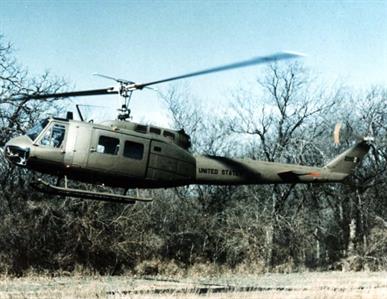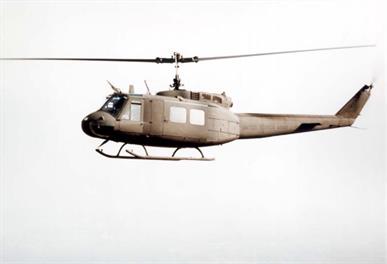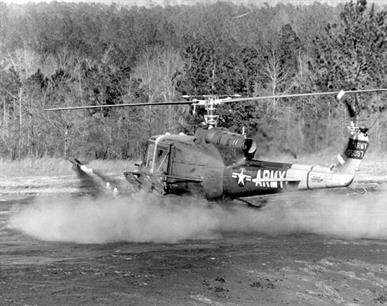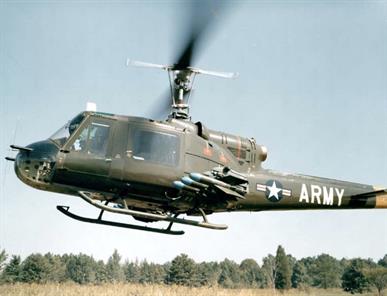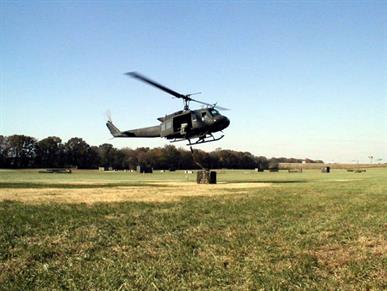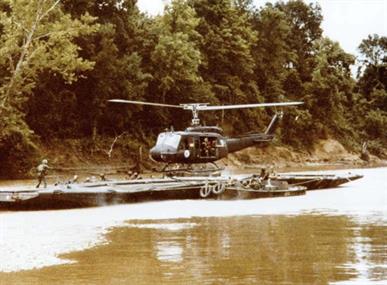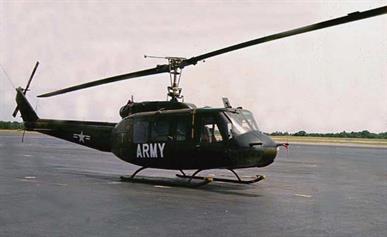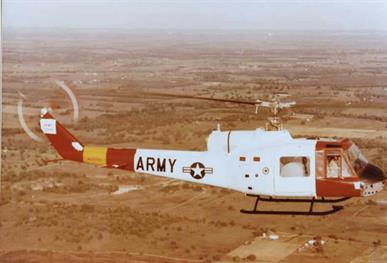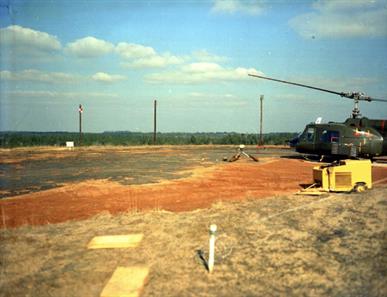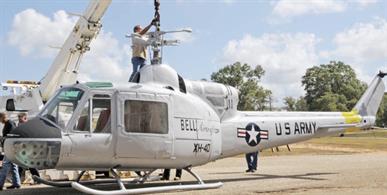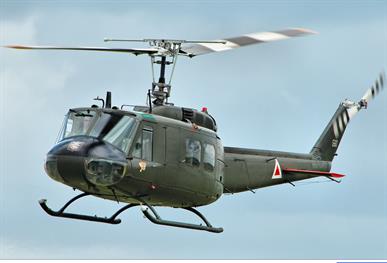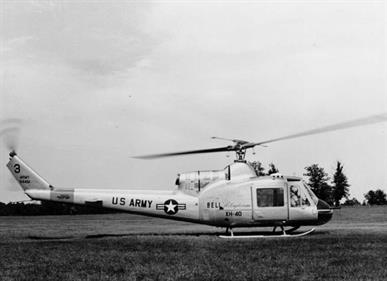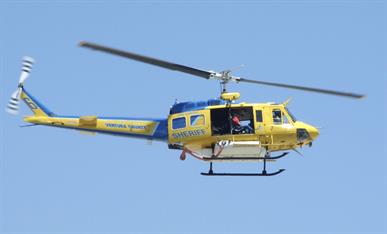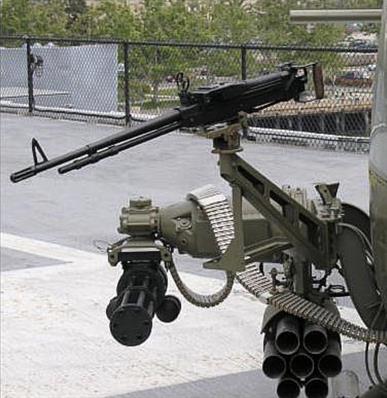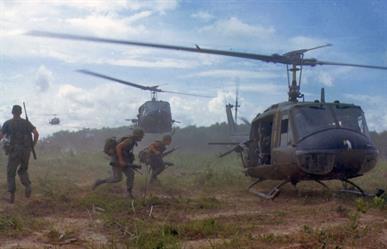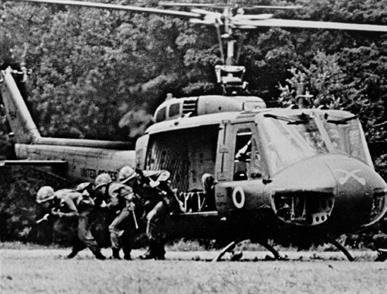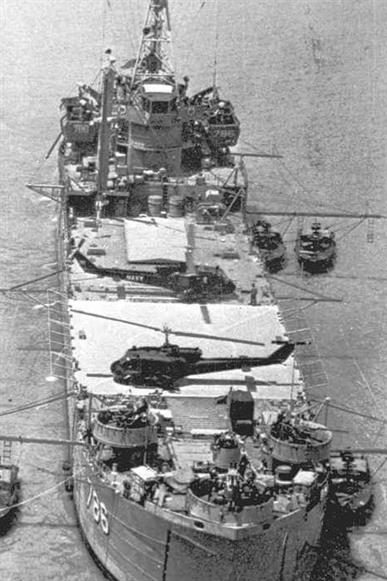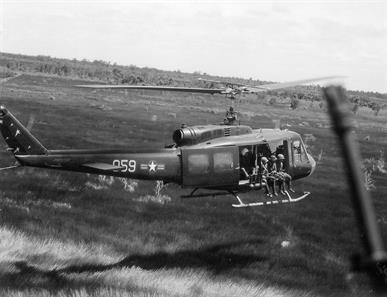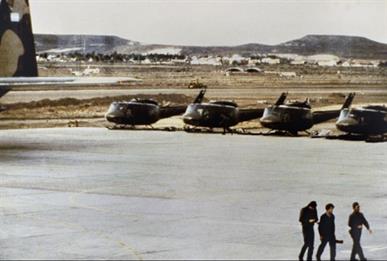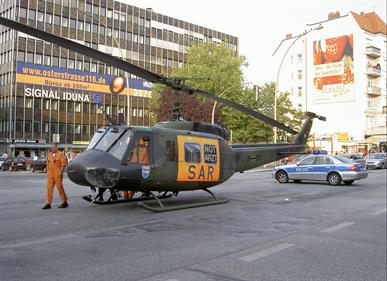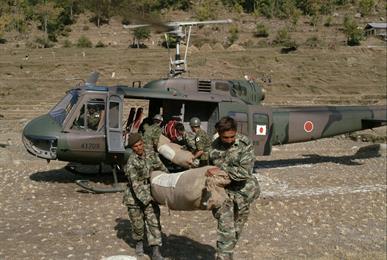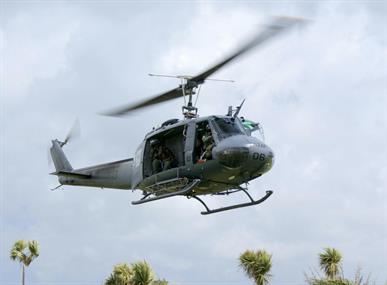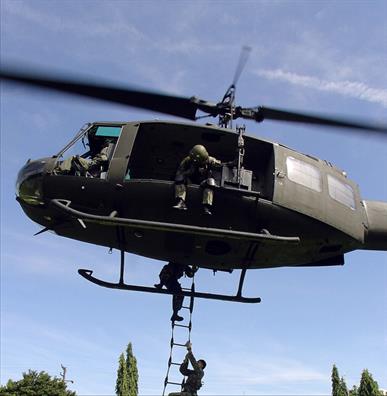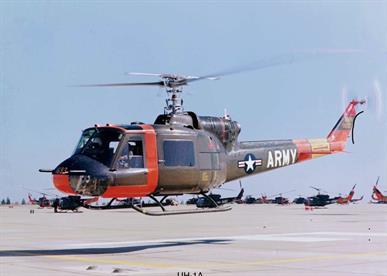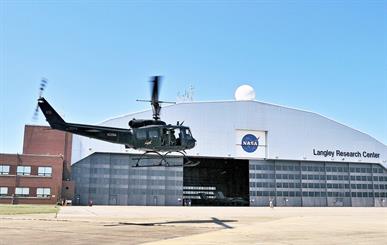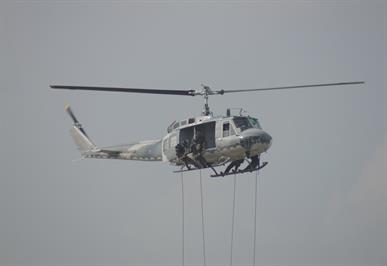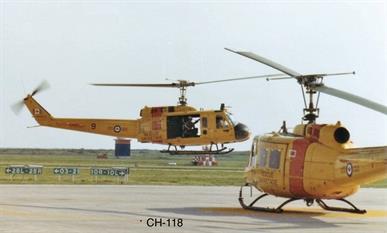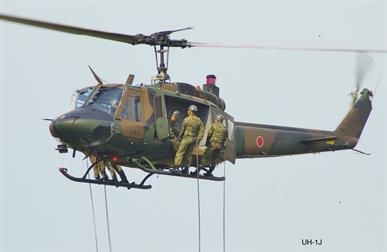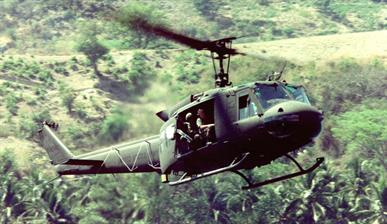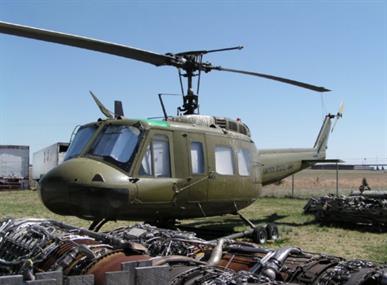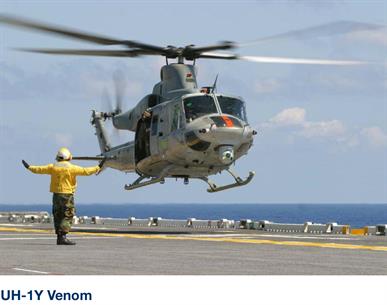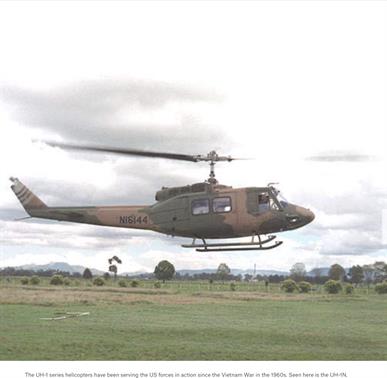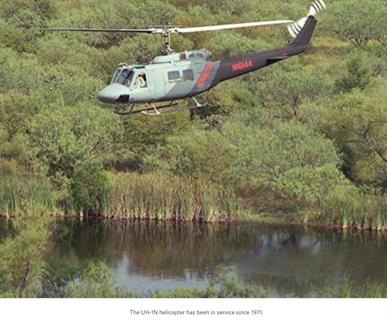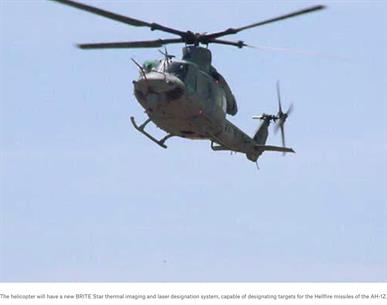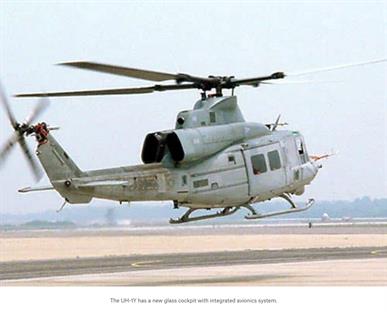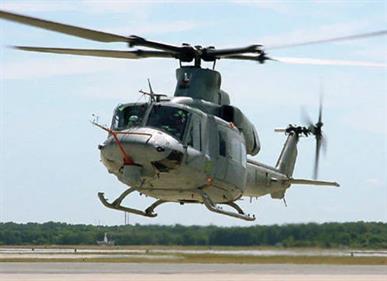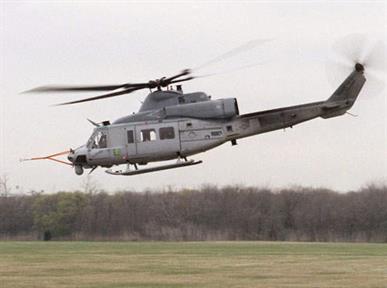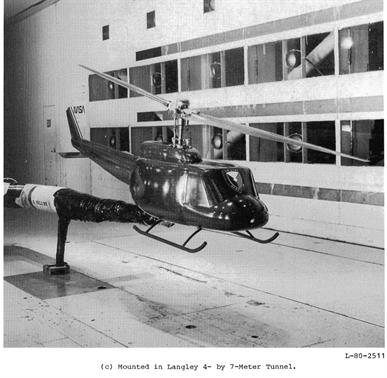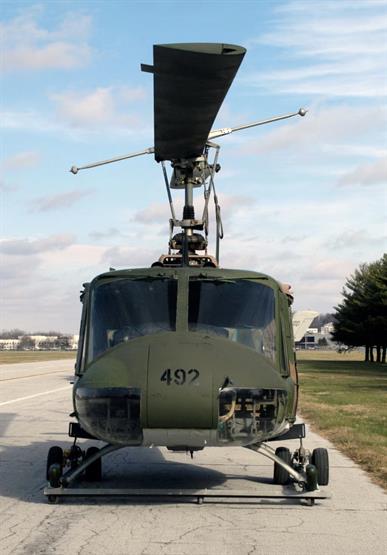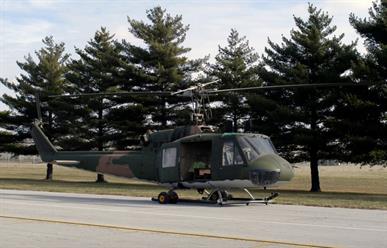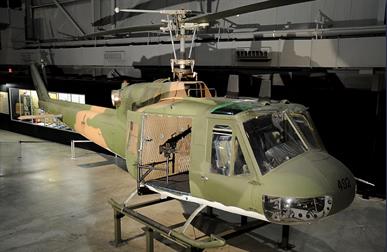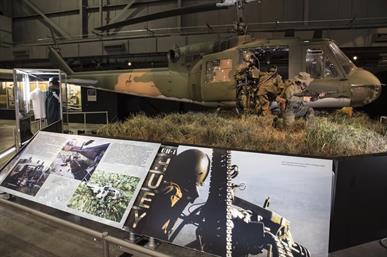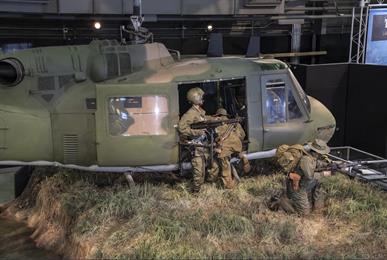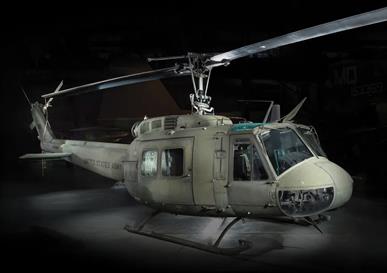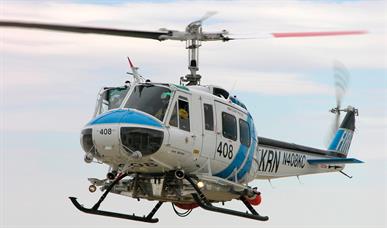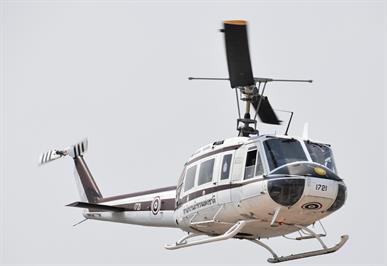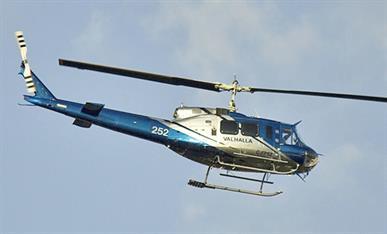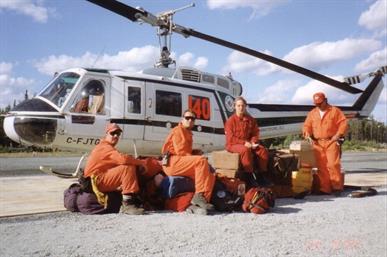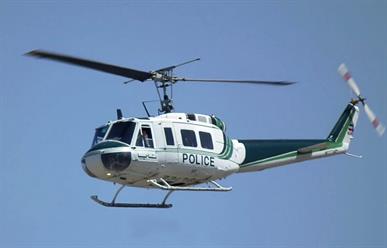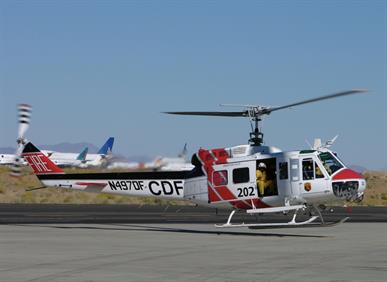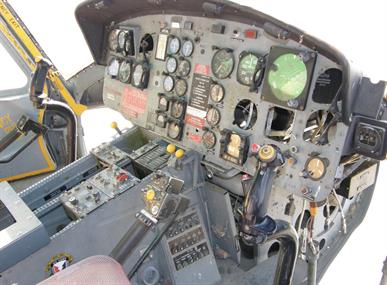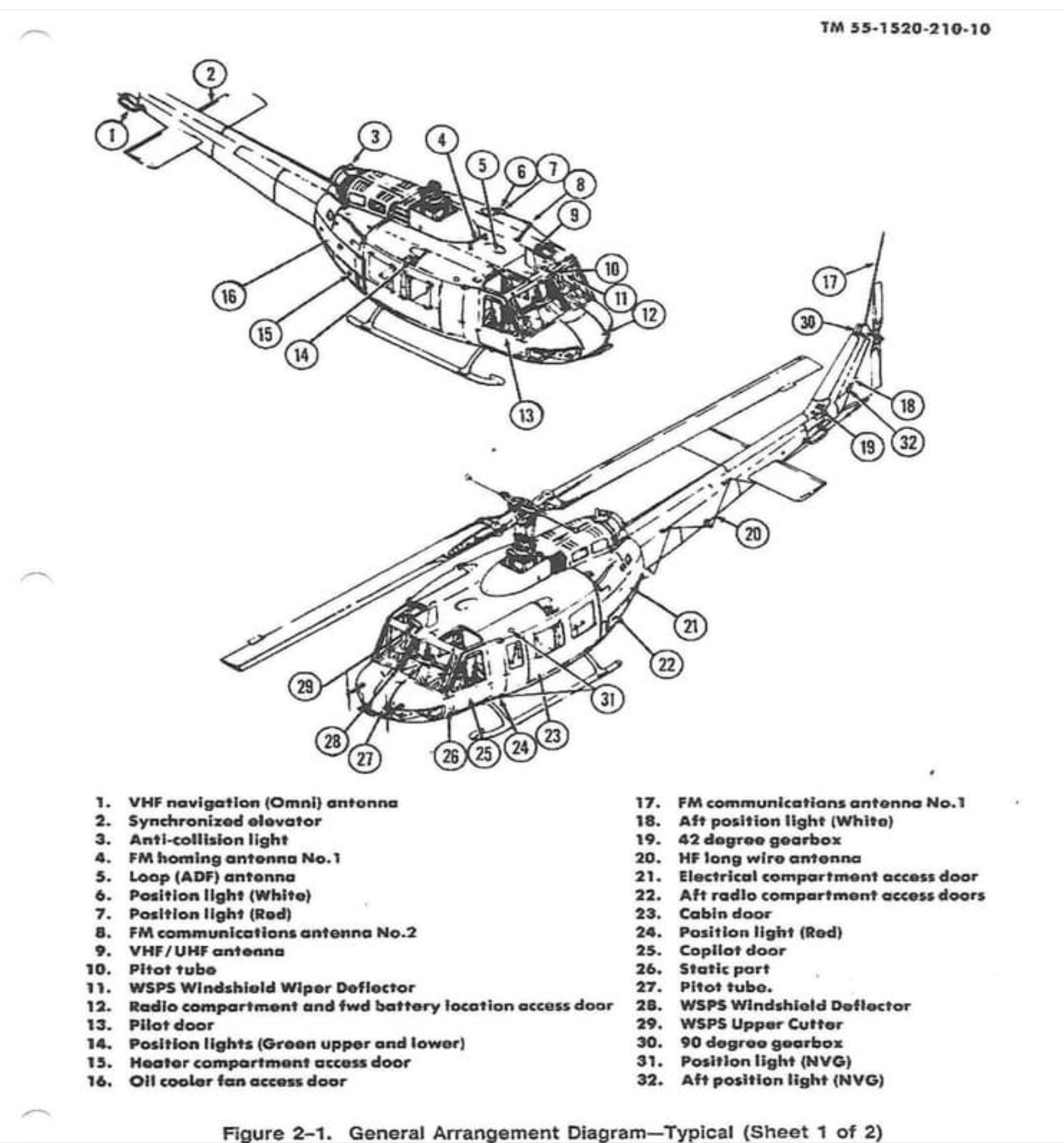

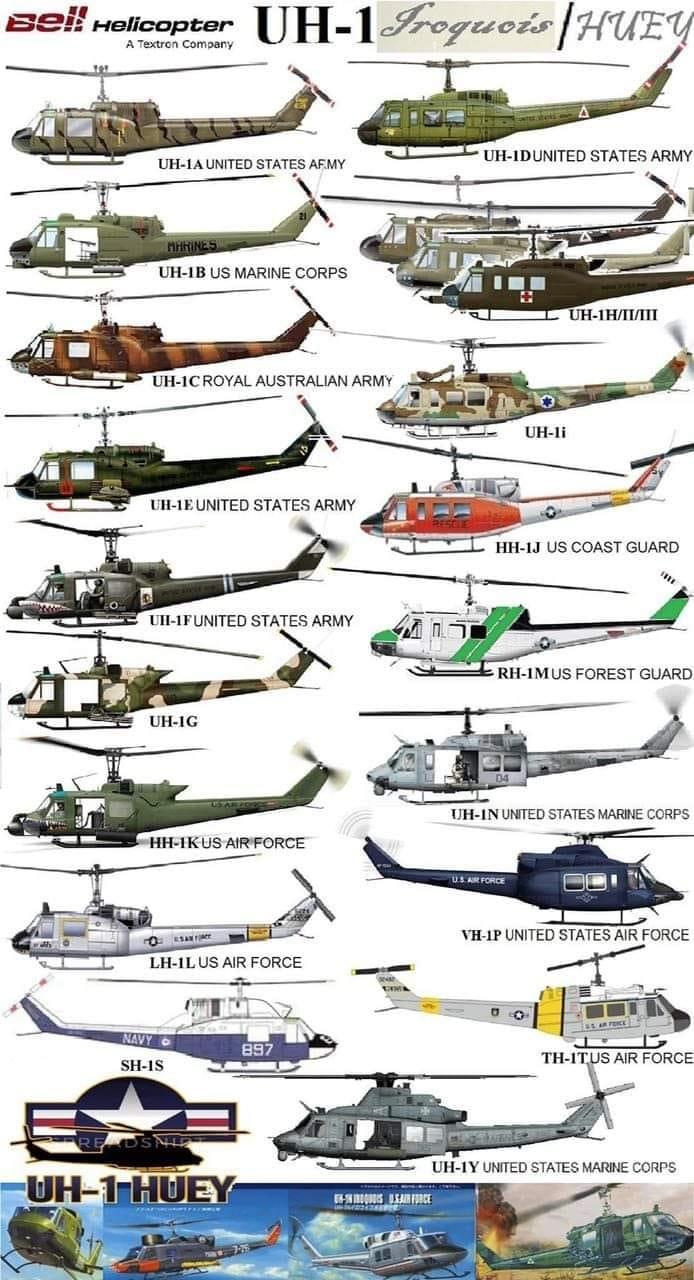
Primary functionUtility helicopter
ManufacturerBell Helicopter Textron
Power plantPratt and Whitney T400-CP-400
PowerBurst: 1290 shaft horsepower (transmission limited)
Continuous: 1134 shaft horsepower (transmission limited)
Length57.3 feet (17.46 meters)
Height14.9 feet (4.54 meters)
Rotor Diameter48 feet (14.62 meters)
Speed121 knots (139.15 miles per hour) at sea level
Ceiling14,200 feet (4331 meters)
(limited to 10,000 feet (3050 meters) by oxygen requirements)
Maximum takeoff weight10,500 pounds (4,767 kilograms)
Range172 nautical miles (197.8 miles)
CrewOfficer: 2
Enlisted: 2
Armament
M-240 7.62mm machine gun or
GAU-16 .50 caliber machine gun or
GAU-17 7.62mm automatic gun
All three weapons systems are crew-served, and the GAU-2B/A can also be controlled by the pilot in the fixed forward firing mode.
The helicopter can also carry two 7-shot or 19-shot 2.75" rocket pods.
Introduction date1971
Unit Replacement Cost$ 2.5 million per www.executiveflyers.con
UH-1N
Range: 330 miles
Service Ceiling: 24,800 ft
Max Speed: 140 mph
Max Cruise: 115 mphBuilt:
Original construction in 1960, Fort Worth, TX
Engine:
1000 kW Lycoming T53-L-13
1400 SHP
Armament:
Various combinations of fixed and flexible .30 caliber, .50 caliber, 7.62mm machine guns (both single and multiple barrel); 20mm cannon, 40mm grenade launchers, 2.75-inch (70mm) unguided, folding fin aerial rockets (FFARs); TOW or AGM-22A antitank missiles
Fuselage Length: 57′
Height: 14’11”
Rotor Diameter: 48′
Empty Weight: 5,200 lbs
Max Weight: 9,000 lbs
UH-1C
Span: 48 feet
Length: 57.3 feet
Height: 14.9 feet
Weight: 10,000 lbs gross
Armament: M-240 7.62mm machine gun or GAU-16 .50 caliber machine gun or GAU-17
7.62mm automatic gun
two 7-shot or 19-shot 2.75″ rocket pods
Engines: One Lycoming T53-L-13B 1400 shp turboshaft engine
Crew: Four; 2 Officers & 2 Enlisted
Cost: $ 273,000
Tail Number: 68-16256
Years in Service: 1950’s – 2004
PERFORMANCE
Maximum Speed: 129 mph
Range: 286 miles
Service Ceiling: 14,200 feet
Length: 57.3 feet
Height: 14.9 feet
Weight: 10,000 lbs gross
Armament: M-240 7.62mm machine gun or GAU-16 .50 caliber machine gun or GAU-17
7.62mm automatic gun
two 7-shot or 19-shot 2.75″ rocket pods
Engines: One Lycoming T53-L-13B 1400 shp turboshaft engine
Crew: Four; 2 Officers & 2 Enlisted
Cost: $ 273,000
Tail Number: 68-16256
Years in Service: 1950’s – 2004
PERFORMANCE
Maximum Speed: 129 mph
Range: 286 miles
Service Ceiling: 14,200 feet
UH-1H
Performance and Weights:
· Maximum Speed
130 knots (149 mph)
· Service Ceiling
16,100 feet
· Range
315 nautical miles (362 miles)
· Endurance
2.8 hours
IGE Hover (MGW)12,000 ft
· Maximum Gross Weight
10,500 pounds
Required Crew 1
Troops/Pax 11
Cargo Hook Cap. 5000 lbs.
Fuel Capacity 211 Gal.
Features:
· Night vision goggle-compatible
-30% Lower Direct Operating Cost than UH-1H
· Maximum Speed
130 knots (149 mph)
· Service Ceiling
16,100 feet
· Range
315 nautical miles (362 miles)
· Endurance
2.8 hours
IGE Hover (MGW)12,000 ft
· Maximum Gross Weight
10,500 pounds
Required Crew 1
Troops/Pax 11
Cargo Hook Cap. 5000 lbs.
Fuel Capacity 211 Gal.
Features:
· Night vision goggle-compatible
-30% Lower Direct Operating Cost than UH-1H
Huey 11
BELL UH-1Y VENOM
Performance
Max Speed
170 KIAS
Cruise Speed
147 KTAS
Sideward/Rearward Flight
45 KIAS
Combat Radius
119 nm
Max Range
325 nm
Maneuverability
-0.5 to +2.3 g
Assumptions: 4 crew members, 500 lbs SAR equipment, Outbound Cruise at 4k ISA, Pick up 2 pilots, Return Leg at 4k ISA, and 15 min reserve.
Capacity
Max Gross Weight
18,500 lbs
Fuel Capacity
388 gal
Powerplant
Model: T700-GE-401C
Output, Uninstalled, Each Engine: 1,800 shp
The Bell UH-1 Iroquois (nicknamed "Huey") is a utility military helicopter designed and produced by the American aerospace company Bell Helicopter. It is the first member of the prolific Huey family, as well as the first turbine-powered helicopter in service with the United States military.
Development of the Iroquois started in the early 1950s, a major impetus being a requirement issued by the United States Army for a new medical evacuation and utility helicopter. The Bell 204, first flown on 20 October 1956, was warmly received, particularly for the performance of its single turboshaft engine over piston engine-powered counterparts. An initial production contract for 100 HU-1As was issued in March 1960. In response to criticisms over the rotorcraft's power, Bell quickly developed multiple models furnished with more powerful engines; in comparison to the prototype's Lycoming YT53-L-1 (LTC1B-1) engine, producing 700 shp (520 kW), by 1966, the Lycoming T53-L-13, capable of 1,400 shp (1,000 kW), was being installed on some models. A stretched version of the Iroquois, first flown during August 1961, was also produced in response to Army demands for a version than could accommodate more troops. Further modifications would include the use of all-aluminum construction, the adoption of a rotor brake, and alternative powerplants.
The Iroquois was first used in combat operations during the Vietnam War, the first examples being deployed in March 1962. It was used for various purposes, conducting general support, air assault, cargo transport, aeromedical evacuation, search and rescue, electronic warfare, and ground attack missions. Armed Iroquois gunships carried a variety of weapons, including rockets, grenade launchers, and machine guns, and were often modified in the field to suit specific operations. The United States Air Force deployed its Iroquois to Vietnam, using them to conduct reconnaissance operations, psychological warfare, and other support roles. Other nations' armed air services, such as the Royal Australian Air Force, also dispatched their own Iroquois to Vietnam. In total, around 7,000 Iroquois were deployed in the Vietnam theatre, over 3,300 of which were believed to be destroyed. Various other conflicts have seen combat deployments of the Iroquois, such as the Rhodesian Bush War, Falklands War, War in Afghanistan, and the 2007 Lebanon conflict.
The Iroquois was originally designated HU-1, hence the Huey nickname, which has remained in common use, despite the official redesignation to UH-1 in 1962.[1] Various derivatives and developments of the Iroquois were produced. A dedicated attack helicopter, the Bell AH-1 Cobra, was derived from the UH-1, and retained a high degree of commonality. The Bell 204 and 205 are Iroquois versions developed for the civilian market. In response to demands from some customers, a twin-engined model, the UH-1N Twin Huey, was also developed during the late 1960s; a four-bladed derivative, the Bell UH-1Y Venom, was also developed during the early twenty-first century. In US Army service, the Iroquois was gradually phased out following the introduction of the Sikorsky UH-60 Black Hawk and the Eurocopter UH-72 Lakota, although hundreds were still in use more than 50 years following the type's introduction. In excess of 16,000 Iroquois have been built since 1960.[2] Wikipedia
Development of the Iroquois started in the early 1950s, a major impetus being a requirement issued by the United States Army for a new medical evacuation and utility helicopter. The Bell 204, first flown on 20 October 1956, was warmly received, particularly for the performance of its single turboshaft engine over piston engine-powered counterparts. An initial production contract for 100 HU-1As was issued in March 1960. In response to criticisms over the rotorcraft's power, Bell quickly developed multiple models furnished with more powerful engines; in comparison to the prototype's Lycoming YT53-L-1 (LTC1B-1) engine, producing 700 shp (520 kW), by 1966, the Lycoming T53-L-13, capable of 1,400 shp (1,000 kW), was being installed on some models. A stretched version of the Iroquois, first flown during August 1961, was also produced in response to Army demands for a version than could accommodate more troops. Further modifications would include the use of all-aluminum construction, the adoption of a rotor brake, and alternative powerplants.
The Iroquois was first used in combat operations during the Vietnam War, the first examples being deployed in March 1962. It was used for various purposes, conducting general support, air assault, cargo transport, aeromedical evacuation, search and rescue, electronic warfare, and ground attack missions. Armed Iroquois gunships carried a variety of weapons, including rockets, grenade launchers, and machine guns, and were often modified in the field to suit specific operations. The United States Air Force deployed its Iroquois to Vietnam, using them to conduct reconnaissance operations, psychological warfare, and other support roles. Other nations' armed air services, such as the Royal Australian Air Force, also dispatched their own Iroquois to Vietnam. In total, around 7,000 Iroquois were deployed in the Vietnam theatre, over 3,300 of which were believed to be destroyed. Various other conflicts have seen combat deployments of the Iroquois, such as the Rhodesian Bush War, Falklands War, War in Afghanistan, and the 2007 Lebanon conflict.
The Iroquois was originally designated HU-1, hence the Huey nickname, which has remained in common use, despite the official redesignation to UH-1 in 1962.[1] Various derivatives and developments of the Iroquois were produced. A dedicated attack helicopter, the Bell AH-1 Cobra, was derived from the UH-1, and retained a high degree of commonality. The Bell 204 and 205 are Iroquois versions developed for the civilian market. In response to demands from some customers, a twin-engined model, the UH-1N Twin Huey, was also developed during the late 1960s; a four-bladed derivative, the Bell UH-1Y Venom, was also developed during the early twenty-first century. In US Army service, the Iroquois was gradually phased out following the introduction of the Sikorsky UH-60 Black Hawk and the Eurocopter UH-72 Lakota, although hundreds were still in use more than 50 years following the type's introduction. In excess of 16,000 Iroquois have been built since 1960.[2] Wikipedia

